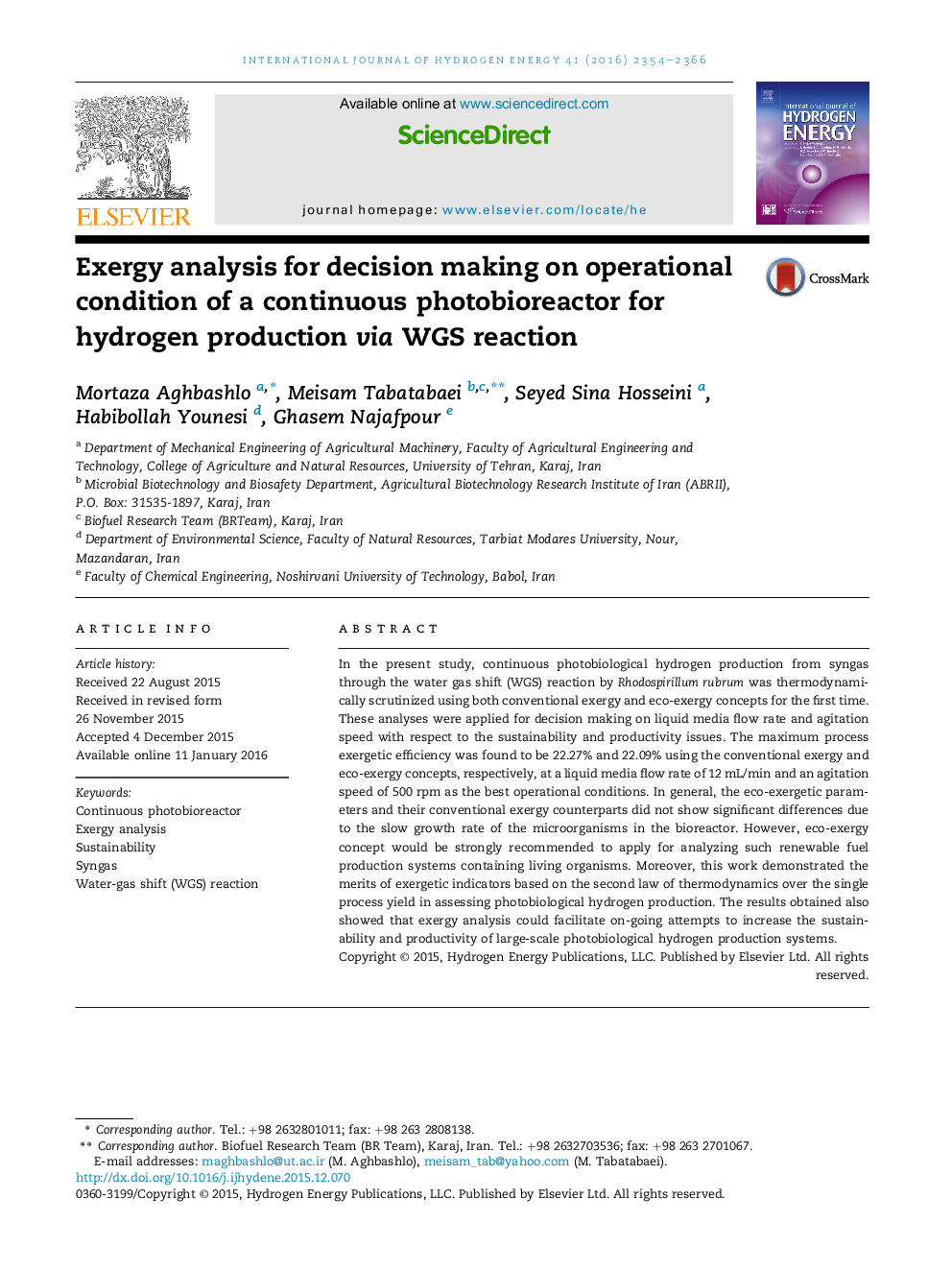| Article ID | Journal | Published Year | Pages | File Type |
|---|---|---|---|---|
| 7711784 | International Journal of Hydrogen Energy | 2016 | 13 Pages |
Abstract
In the present study, continuous photobiological hydrogen production from syngas through the water gas shift (WGS) reaction by Rhodospirillum rubrum was thermodynamically scrutinized using both conventional exergy and eco-exergy concepts for the first time. These analyses were applied for decision making on liquid media flow rate and agitation speed with respect to the sustainability and productivity issues. The maximum process exergetic efficiency was found to be 22.27% and 22.09% using the conventional exergy and eco-exergy concepts, respectively, at a liquid media flow rate of 12Â mL/min and an agitation speed of 500Â rpm as the best operational conditions. In general, the eco-exergetic parameters and their conventional exergy counterparts did not show significant differences due to the slow growth rate of the microorganisms in the bioreactor. However, eco-exergy concept would be strongly recommended to apply for analyzing such renewable fuel production systems containing living organisms. Moreover, this work demonstrated the merits of exergetic indicators based on the second law of thermodynamics over the single process yield in assessing photobiological hydrogen production. The results obtained also showed that exergy analysis could facilitate on-going attempts to increase the sustainability and productivity of large-scale photobiological hydrogen production systems.
Related Topics
Physical Sciences and Engineering
Chemistry
Electrochemistry
Authors
Mortaza Aghbashlo, Meisam Tabatabaei, Seyed Sina Hosseini, Habibollah Younesi, Ghasem Najafpour,
